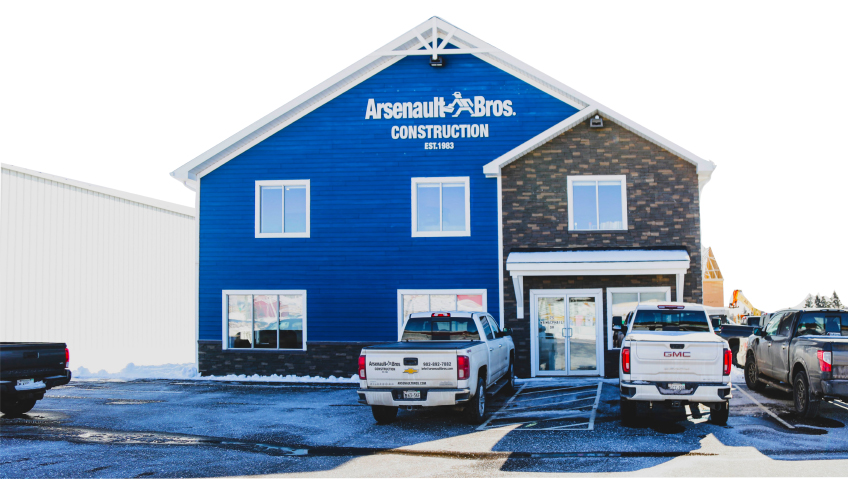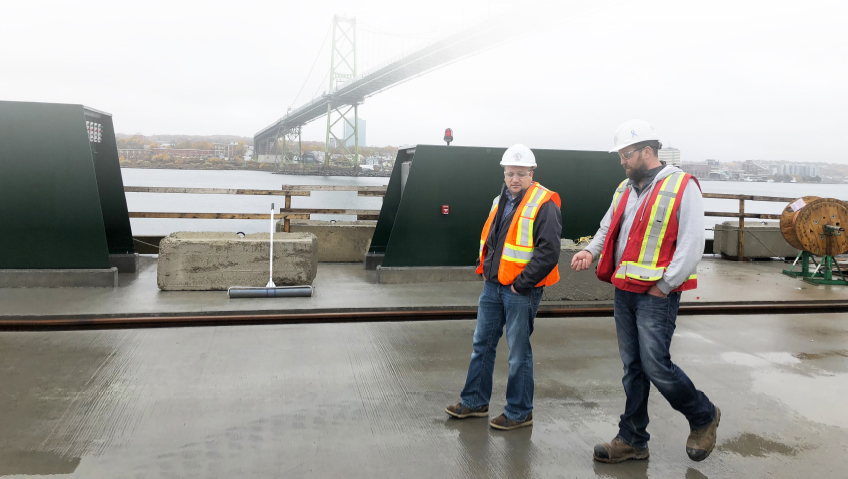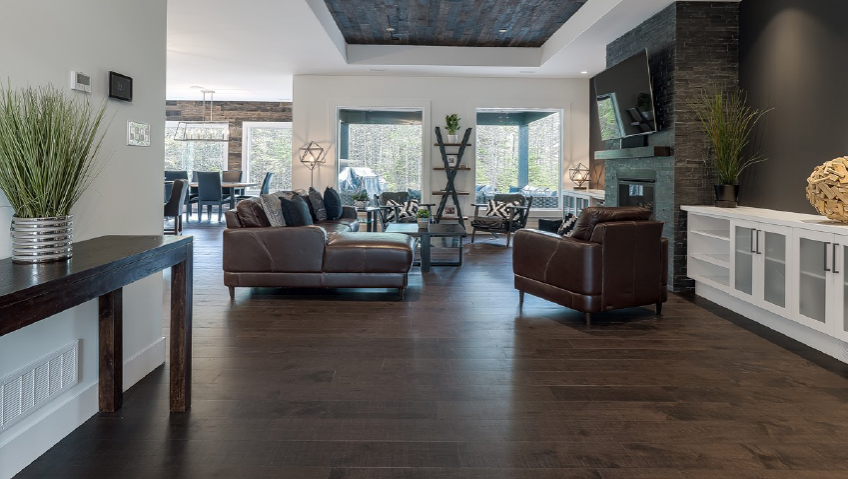As I was researching how architects are integrating nature into the built environment, I recalled an interview I had done for my Art Talk newspaper column in 2015 with realist artist Angelica De Benedetti. She was exhibiting a collection of nature-themed oils and watercolour paintings entitled Nature’s Breath, and shared insights into how nature and even paintings of nature can induce feelings of well-being, which may have implications for architectural design and the positive effects it can have.
“I’ve always painted what gives me pleasure and peace,” she said, “and now medical research is finding that an outing in nature helps lessen stress and improves our outlook.” She showed me an article from the May 27, 2012 edition of the Globe & Mail, which quoted University of Chicago psychologist Marc Berman: “Researchers have found that going for a walk in a natural setting boosts mood and improves performance on cognitive tests. In fact, even looking at a picture of a natural scene produces a similar (though attenuated) cognitive boost. Our brains seem to respond more to the irregular shapes and high colour saturation of nature than to the straight lines and greyish hues of urban settings.”
Going natural
That conversation prompted research which led to articles in journals such as The Lancet, The Wall Street Journal, and Health Forum Journal, all of which indicated that healing benefits can be derived from simply looking at nature paintings or photographs.
For example, “The research findings of Roger Ulrich, PhD, indicate that psychologically appropriate art can substantially affect outcomes such as blood pressure, anxiety, intake of pain medication, and length of hospital stay,” according to The Journal of the American Medical Association’s 1999 article, The Arts of Healing. “In particular, representational portrayals of nature are shown to have a beneficial effect on patients experiencing stress and anxiety.”
Another article by Ulrich and L. Gilpin, published in 2003 in Putting Patients First, says that, “providing patients, families, and staff with access to nature by providing indoor and outdoor gardens, views of nature through windows, and artwork of nature scenes can relieve stress.”
Keeping in mind that psychology is an imperfect science and that it’s impossible to ‘scientifically prove’ these theories in the way one can prove the Pythagorean theory, the evidence suggests that exposure to nature positively affects cognitive ability and lessens anxiety.
As a corollary, it’s safe to assume that people surrounded by nature are likely to be more focused, calmer, and healthier, and as a consequence, more productive – all in all, in a condition that’s beneficial to the economy and society as a whole, beyond the personal benefits.
And if images of trees, waterfalls, and wildflowers, or walking in nature can have such a positive effect, one can’t help but wonder about the effects of incorporating natural elements into the architecture of the places where we live, learn, work, heal and recreate.
Improving air flow
I once worked as a high school teacher-librarian. It was in a newly built school, and the library was outfitted with all the accoutrements one could ask for – except there were no windows. No natural light! No fresh air! With a poor ventilation system, head colds, allergies, and sore throats ruled.
It took a pandemic, spread by airborne particles, to make the world recognize the critical importance of indoor air quality. If a building becomes a breeding ground for SARS-CoV-2, the virus that causes COVID-19, then the institution that operates within it – whether it be a school library, hospital, or fulfilment centre — is compromised.
Ventilation in Buildings, a report issued by the Centers for Disease Control and Prevention (CDC) on June 2, 2021, indicates that “viral particles spread between people more readily indoors than outdoors, where the concentration of viral particles is higher,” and that, “the lower the concentration, the less likely viral particles can be inhaled into the lungs.”
In most cases, buildings won’t require the replacement of their ventilation systems, but the CDC strongly recommends that building owners consult experienced HVAC professionals.
It also recommends the introduction of outdoor air, by opening air dampers beyond minimum settings to reduce or eliminate HVAC air recirculation; opening windows when weather conditions allow; using fans to increase the effectiveness of open windows, and improving central air filtration efficiency, especially helpful when enhanced outdoor-air delivery options are limited.
The experts at CDC also recommend the use of portable high-efficiency particulate air (HEPA) fan/filtration systems to enhance air cleaning, especially in high-risk areas.
Although the pandemic will end eventually, the common cold, headaches, and general malaise induced by stuffy air will continue to plague people working where airflow is inadequate. Maintaining air quality at all times translates into healthier employees with fewer sick days and successful students.
Living in natural light
It’s tempting to wish that the architects who designed the 6000 square foot library where I worked had the insight of Souktik Bhattacherjee about the importance of natural light, which he shared in 10 Benefits of Natural Light in Architecture. He says that, “Natural lighting is one of the most important aspects of architecture for its impact on the wellbeing of humans, energy consumption, and enrichment of spaces.”
His list of benefits begins with energy consumption which can be reduced by up to 40 percent and a consideration of how natural light enhances the quality, and hence the value, of the space, from an aesthetic as well as a hygienic viewpoint, because sunlight inhibits the growth of fungi and molds.
Natural lighting, he says, improves psychological well-being by improving mood, enhancing morale, increasing energy levels, and alleviating symptoms of Seasonal Affective Disorder (SAD), a source of depression and other implications for employees in office, educational, medical, and industrial environments. Even retailers have indicated increased sales after adding windows, including clerestory windows or skylights, which enhance the shopping experience.
That is not to say that windows are free of problems, but window construction, developed in recent years, has done much to ameliorate issues of the past. Triple glazing and Venetian-style blinds inserted between panes of glass, for example, have eliminated temperature drops and glare issues.
But those improvements are just the beginning, as “smart technology” can now be built into windows. 5 Emerging Window Technologies that Are Hard to Believe Are Real, published in 2022 by Econoline Windows, reveals what the windows of the future will look like.
While the glare and heat buildup behind large expanses of window glass are unpleasant, they can be eliminated through electrochromic technology which is now used to tint airplane windows. An alternative, still in the developmental stage, involves intuitive transitioning technology that works with glass temperature change.
Michigan State University researchers are exploring ways to capture solar energy using a transparent luminescent solar concentrator, which works with clear glass; there’s also a patent-pending technology that involves applying an electricity-generating spray coating to glass surfaces to create an organic photovoltaic solar array.
The article also includes mention of “bird-friendly windows”, a patterned coating visible to birds but not to humans, that has been tested and approved by the American Bird Conservancy to save millions of birds from injury or death by flying into glass windows.
And for those whose main objection to windows is the cleaning process, that’s has been solved too, with robotic window cleaners available in the mainstream market.
Green roofs and living walls
Replacing artificial plants in offices with real ones which absorb carbon and enhance oxygen levels is a great start, but only a start. The American Society of Landscape Architects, (ASLA) for example, has been promoting far more ambitious green infrastructure projects since the early 2000s, including the green rooftop of its own headquarters in Washington, D.C.
According to the association’s website, green roofs and walls have psychological benefits for occupants of individual buildings, but also have an impact on a much larger scale within the urban landscape, “where they present opportunities to create networks for wildlife habitat, and stormwater management,” in addition to carbon absorption.
Far from these innovations being nothing more than feel-good structures, offering the psychological benefits of nature, the association’s website maintains that they offer building owners “significant economic benefits, including a longer roof life, and heating and cooling energy savings.”
Green roofs can extend a roof’s lifespan by two or three times. A study carried out for Sustainable South Bronx, for example, showed that on a day when the air temperature is 90° Fahrenheit, the temperature of the green roof is 80° F, while the black roof can reach as high as 175° F, causing substantial wear and tear.
Because of the cooling a green roof affords, ASLA suggests that a typical two- to three-story building could experience 15 to 25 percent savings in summertime energy costs.
Green roofs also play a significant role in water management and can catch between 40 and 60 percent of stormwater, thereby reducing flow into urban sewers. One example cited by ASLA is the green roof on FedEx’s Main Sorting Facility at O’Hare (Chicago) which covers nearly 175,000 square feet, captures close to two million gallons of stormwater annually, and will save the company an estimated $35,000 in energy costs per year.
And the list of economic and ecological benefits goes on.
For example, a study quantifying ecosystem services resulting from Portland, Oregon’s green infrastructure practices in 2009 found that green roofs reduced particulate (less than 10 micrometers diameter) matter by 7.7 pounds; created substantial energy savings and sequestered 7.1 metric tonnes of carbon emissions per acre per year. (Portland’s Green Infrastructure: Quantifying the Health, Energy and Community Livability Benefits, Environmental Services, City of Portland.)
As nations move toward meeting the goals of the Paris Climate Agreement by 2030, green roofs provide a viable means for urban areas. Not only are building owners benefitting — the urban landscape and by extension, the entire world, is benefitting.
Green walls include most of the benefits of green roofs, along with some additional ones. Susan Loh, writing in Living Walls: A Way to Green the Environment for the Australian Council of Built Environment Design Professionals, maintains that temperatures behind green walls can be reduced by as much as 10° Celsius; green walls can reduce sound deflection, and reduce energy costs by 23 percent.
Green roofs and green walls are becoming increasingly popular and green infrastructure projects can be found around the world. This magazine’s research uncovered examples coast to coast in the U.S., Canada, England, Singapore, Mexico, and Australia, among others.
It’s an idea whose time has come.
Water, water everywhere
There’s no denying that people are drawn to water features; whether it’s an elaborate fountain or a reflection pool, a dramatic interior water wall in corporate office headquarters or an airport, or a miniature one on a coffee table.
These features make a signature statement, add immense value to the visual and aural ambiance of a commercial space, and create an aura of Zen-like calm in a counselling office, a spa or salon, or a private residence. They also can double as humidifiers, which, depending on the climate, may be noticeably beneficial.
But before diving into water features in the built environment, Chris Roy, Director of Creative Design at OTL, Inc. of Anaheim, a design-build company that has created more than 150 stunning water-based projects, adds some important caveats.
In an interview published in Facility Executive, Roy talks about factors building owners and managers should be aware of before installing water features.
Key among them are questions around sustainable design which can utilize water from non-potable sources, including reclaimed water, captured HVAC condensate, and rainwater harvesting. Another major concern is that of public health, and facility managers must be prepared to practice proactive maintenance to prevent waterborne threats such as bacteria, and also implement the use of chemical-free, biological water sanitizing systems.
For too many years, the built environment has been all about separation from the natural environment, resulting in buildings that are not always life-affirming for occupants, or for the environment.
But you just have to look around to see that the built world is gradually changing, as forward-thinking architects and urban planners, aided by smart technology, are realizing that more often than not, Mother Nature knew better all along.






